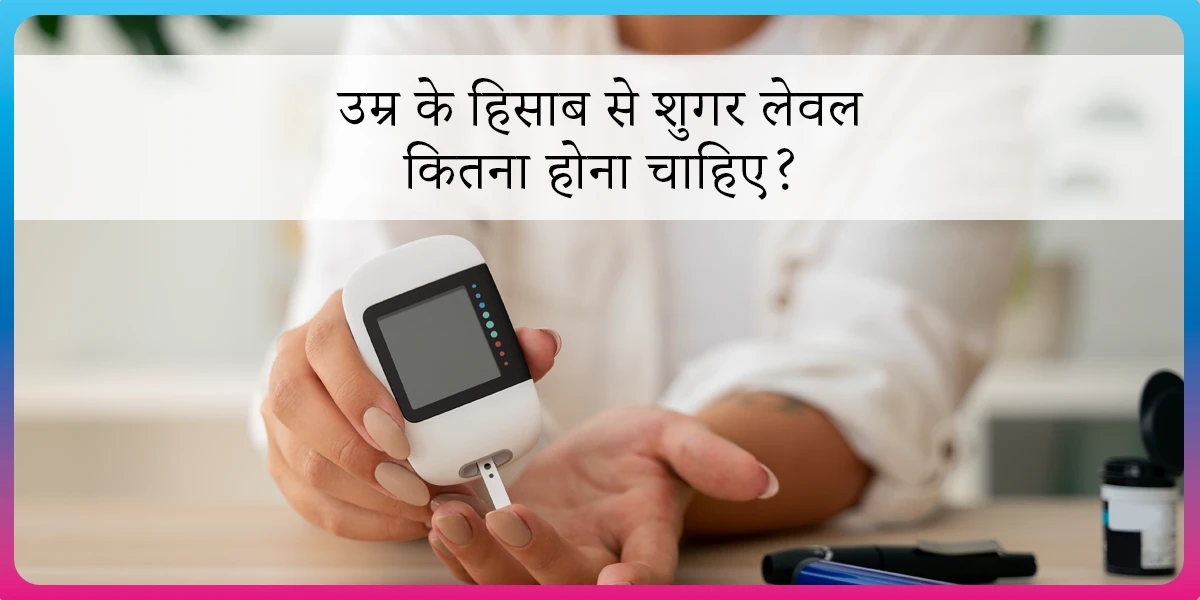50 Fitness Tips to Beat Prediabetes

Prediabetes is a condition where your blood sugar levels are higher than usual but not high enough to be considered Type 2 diabetes.
If you have been diagnosed with prediabetes, your doctor has probably noticed that your blood sugar levels are in the range of 100 and 125 mg per dL, which is higher than your regular blood sugar (between 50 to 99 mg per dL.)
What’s more, Indians are more prone to progress from prediabetes to type 2 diabetes compared to the rest of the world (a 50% progression in Indians compared to 15% in the rest of the world). That’s because of several reasons, including:
- We’re genetically predisposed to diabetes – causing us to be diagnosed with the disease earlier than the rest of the world’s population.
- We also have a higher degree of insulin resistance, and
- Our Beta cells tire easily and start producing a lesser amount of insulin.
What happens if you don’t control prediabetes?
If not controlled, prediabetes can progress to Type 2 diabetes, which can be harder to manage and put you at risk of several associated ailments. That said, prediabetes also puts you at risk of stroke and heart disease.
Prediabetes is the golden zone – you can reverse or control it by not allowing it to progress into type 2 diabetes. But, in order to control or reverse prediabetes you need personalised guidance — because everyone’s different and respond differently to food, diet and exercise.
Having a personalized plan to wade through this journey is the key. So, when it comes to preventing the progress of prediabetes to type 2 diabetes, exercise plays an important role in managing your blood sugar levels, helps you lose weight and can even prevent the long term complications of diabetes.
Fitness tips to help control prediabetes
- Exercise regularly: Exercise is great for your overall health, it helps you lose weight and helps your mental health. But exercise has a significant effect on your blood sugar levels. It helps lower your blood sugar levels and increases insulin sensitivity – it also helps cells in your body to use insulin more efficiently.
- Start your fitness journey slowly and steadily: It’s incredible that you’ve planned to start your fitness journey and begin exercising, but know that if you’re a beginner or starting to work out after a long time, making a slow, measured start is a good idea. For instance, you could start with low impact exercises like spot walks, high knees, squats, crunches, etc.
- Get some cardio in: Cardio or cardiovascular exercise is great to get your heart pumping, lower your blood sugar levels, increase muscular insulin sensitivity, improves the functioning of your respiratory system and even helps you lose weight. Some common cardio exercises are walking, jogging, jumping jacks, burpees, and spot jogging.
- Do not overexert yourself: If you’ve just started working out or are doing so after a long break, then make sure you take it easy and not overexert yourself. For example, make sure to take a day’s break between two resistance training sessions or alternate days of cardio and resistance training.
- Always warm-up and cool down: This will ensure that you do not hurt yourself, prevent fatigue, muscle soreness and sudden hypoglycemia (a condition where your blood sugar drops suddenly).
- Add some strength training to the mix: Also known as resistance training, this kind of exercise mainly works on major muscle groups and helps strengthen your muscles, prevents muscle loss, helps lower your blood sugar levels, and slows the progression of common ailments that diabetes can worsen. Some common strength training exercises include; weight lifting, working out with resistance bands, heavy gardening, and even walking up a flight of stairs.
- Mix cardio and resistance training: When you combine cardio with strength training, it makes for a great combo that can help you lose weight, lower your blood sugar levels, improve muscle mass and insulin sensitivity. As per a statement[1] by the American Diabetes Association in 2016, it is recommended that a person should do about 150 minutes of moderate- to high-intensity cardiovascular exercise (cardio) per week (or 75 minutes of high-intensity exercise), you should also strength train at least two or three times per week.
- Lose weight: This is an essential aspect of reversing or controlling the progression of prediabetes. But, if you feel like this is an impossible task, then think again. A study [2]found that losing just five to 7 per cent of weight can help lower the risk of prediabetes progressing to type 2 diabetes by 58%!
- Get that waist circumference down: A higher waist size and BMI puts you at a greater risk for type 2 diabetes. This high waist size poses a more substantial risk for women than men. Men with a waist size greater than 40 inches are at a 22 times higher risk of being diagnosed with diabetes than those with a waist size lower than 37 inches. So, if you’re overweight, it’s time to lower that waist size with the correct diet and exercise.
- Check your blood sugar levels before and after a workout: Your blood sugar levels usually fall when you workout, so you must check them both before and after your workout. If your blood sugar levels are between 100mg/dL and 250mg/dL. But if it’s below 100, you should eat a snack before you start your workout. Also, if you’re planning a long workout that’s more than two hours, you shouldn’t start before your blood sugar levels are above 100mg/dL.
- Always eat something before your workout: As mentioned above, your blood sugar levels tend to fall after a workout. Therefore, you should eat something before your workout to maintain your blood sugars and ensure they do not drop too much.
- Try yoga: Yoga is an excellent form of exercise that can help you manage prediabetes and prevent its progression to diabetes. Yoga can help lower your blood pressure, blood sugar levels, and can help improve circulation and even help reduce the risk of other associated ailments. So, go ahead, give yoga a try to help lower your blood sugar levels.
- Change up your workout routine: When you do the same workout routine every day, your body tends to get used to the pattern, and you hit what’s known as a plateau – a state where your weight loss slows down, and so do the changes in your body. Therefore you need to keep switching up the kind of workout you do – this also helps keep you interested in working out and prevents you from getting bored and giving up.A good example is to switch from walking to maybe swimming or a cardio routine indoors.
- Realise that Indians are at a higher risk of diabetes: As a race, Indians are at a higher risk of being diagnosed with prediabetes. Because we have a genetic predisposition to diabetes, we have a higher degree of insulin resistance, and our Beta cells tire easily and start producing a lesser amount of insulin. While all this may seem out of your control, there are a few things you can change. For instance, you could try to be less sedentary, avoid sitting for long hours and keep track of the number of carbs you eat.
- Get at least 30 minutes of workout every day: Experts suggest that because, we as Indians, have a higher predisposition to type 2 diabetes and have a lower insulin sensitivity overall, we need to work out for at least 30 minutes a day to keep prediabetes controlled and prevent its progression to type 2 diabetes.
- Workout at least six days a week: Again, this is due to our higher risk of being diagnosed with diabetes; therefore, Indians need to work out longer and more often than populations of the rest of the world. So, try to get at least some form of exercise six days a week to help keep prediabetes in control. You could try switching it up through the week with whatever form of exercise you enjoy.
- Get the help of a trained physiotherapist/trainer: A trained physiotherapist can help guide you through the process of starting your exercise regimen safely without overexerting and injuring yourself. They will also be able to assess your ability and fitness levels at the start and slowly guide you to increase the intensity of your activities.
- Sleep well: Lack of sleep makes it difficult for your body to use insulin efficiently, making you more likely to progress to diabetes. Therefore, set good sleep habits and try to wake up at the same time every day.
- Get any sleep-related ailments treated: Common sleep-related ailments like sleep apnoea (a condition where your breathing when you sleep is erratic and can stop for short periods) can cause disturbed sleep and affect how your body utilises insulin. So, if you think you have any sleep-related ailments, it is a good idea to get yourself tested. This will help identify the exact issue so that treatment can begin and you can get a restful night’s sleep.
- Manage stress: When you’re stressed, your body produces the stress hormone that interferes with the functioning of the insulin-producing cells, which reduces the amount of insulin they make, causing a spike in your blood sugar levels. Therefore, if you’re someone who’s very often stressed, try to find ways to deal with it better and bust it.
- Don’t use mobile phones before bed: Using your phone before bed can interfere with your circadian rhythm and make you stay awake longer. And since sleeping less affects your blood sugar levels, a no-phone rule one hour before bedtime is a good habit to inculcate.
- Avoid using your laptop first thing in the morning and just before bed: Using your laptop, just like your phone, can affect your sleep cycle. It can also make you incredibly anxious if you’re checking work emails or notifications. So shut down that laptop and get some much-needed rest.
- Try deep breathing: A study[3] found that deep breathing can help lower your blood sugar levels and even slightly affect your blood pressure. The overall effect of deep breathing was to lower stress and thereby help you keep your blood sugar levels in check. So maybe it’s time to start practising some deep breathing to help lower your chances of progressing to type 2 diabetes.
- Try meditation: Another study found that deep breathing and meditation can help lower your blood sugar levels and help lower your risk of heart disease. Not only is the practice calming, but it’s also one that can help you prevent the progression of prediabetes.
- Get a trained psychologist to help you beat stress: A trained psychologist can not only help you in identifying the stressors of your life, but they can also help you learn to manage stress better so that you can help keep your blood sugar levels in check.
- Eat healthily: This is another critical component to preventing the progression of prediabetes. Load up on vegetables, especially those less starchy, like spinach, green leafy vegetables, carrots and beans. Try adding more fiber to your food, eat about one to three servings of fruits a day and try to swap out high-calorie foods for their low-calorie alternatives.
- Eat fewer carbs: Carbs are not your friend when you have prediabetes. This doesn’t mean cutting out carbs completely from your life; it’s just that you should eat foods that have complex carbs.
- Drink more water: Dehydration causes your kidney to overwork. And with diabetes, your kidneys are already working overtime to get rid of the excess sugar in your blood. Therefore you need to stay well hydrated at all times. Try keeping a bottle of water around you at all times, so you remember to drink every opportunity you get.
- Skip the sugary drinks: Yes, you’re required to stay hydrated, but sugary drinks are not the way to do that. Drinks that contain added sugar not only come packed with sugar, they also have empty calories and result in sharp spikes in blood sugars. So skip those sugary drinks and stick to healthier options like homemade flavoured water or maybe even salted limbu pani.
- Pull back on the portions: Portion control is critical to managing and reversing prediabetes. The food you eat directly relates to spikes in your blood sugar levels, mainly carbohydrate-rich foods. But apart from the spike in your blood sugar levels, controlling the portion sizes you eat can also help you lose weight and reversing prediabetes. So, cut down on the portion sizes you eat to manage prediabetes and reverse it.
- Fill up on fiber: Fiber-rich foods help slow down the release of glucose into your blood, therefore helping to prevent a spike in your blood sugar levels. Fibre-rich foods also keep you feeling full for longer, which also helps in weight loss. So, fill up on those high fiber foods like whole grains, carrots and green leafy vegetables.
- Choose healthy sources of fats: Although it sounds counterintuitive to what you may have heard, eating the right kind and amount of fats plays a vital role in managing prediabetes. Foods that contain healthy fats like nuts, avocado and peanuts also help keep your blood sugar levels in check.
- Pick healthy, fibre-rich grains: High fiber foods can help keep your blood sugars in check and keep them from spiking. Whole grains such as oats, wheat and bajra can help keep your blood sugar levels in check.
- Skip meat now and then: Meats aren’t bad, but choosing the right kind is essential. And skipping meat and opting for a whole grain, veggie meal can help your blood sugar levels.
- Eat the right kind of meat: Lean meats like fish, poultry, and pork can help keep your blood sugar levels in check and slow down prediabetes progression to type 2 diabetes.
- Pick the right proteins: As per the American Diabetes Association eating plant-based proteins like beans, nuts and seeds or choose fish and seafood, eggs and low-fat dairy to be a part of your diet to help manage prediabetes better.
- Skip those fad diets: Yes, losing weight is essential to keep prediabetes in check, but opting to follow a fad diet is a bad idea, especially if you have prediabetes. Because when you skip a meal or don’t eat enough, you could experience a sudden drop in blood sugar levels, which can be very dangerous.
- Get regular, annual check-ups: Getting a regular check-up when you have prediabetes is also extremely important. Your doctor will keep track of your HbA1c levels and gauge how well you’re managing your blood sugar levels. He will also check for any other complications you might be at risk of due to prediabetes.
- Eat the right kinds of fruits: Fruits high in fiber and low in sugar content are your best friends. Fruits such as apples, avocados, berries, grapefruits and kiwi are the perfect snack options and come packed with vitamins, minerals, antioxidants and are great to keep your prediabetes in check.
- Learn about personal glycemic response: Your personalised glycemic response is a method to learn how various factors affect your blood sugar levels, including how your body responds to various foods and measures how quickly sugar from those particular foods enter your bloodstream. Every person reacts differently to different foods, and therefore, it is essential to know which foods you should choose and which one’s you should skip. For more insight into what foods are the best for you, you should get an assessment from an expert. Here’s a video to understand what personalised glycemic response is and how it works.
- Avoid carbohydrate-rich foods or ones with added sugars: Foods high in carbs and sugar can cause your blood sugars to spike. So, choose wisely, and pick healthier options instead.
- Work with an expert nutritionist: An expert nutritionist can help guide you through the entire process of eating right and keeping track of your blood sugar levels. She can also guide you to choose the right foods and make smart swaps to help you live healthily.
- Don’t smoke: Smoking can adversely affect your prediabetes. Not only can it make you more insulin resistant, but it can also worsen the condition. Therefore it’s best to quit.
- Drink in moderation: When you have prediabetes, you can have a drink, but in moderation. Read on to find out if you can drink alcohol when you have diabetes
- Take your medications as prescribed: Your medication is critical and should not be missed. So follow your doctor’s orders and take your medication on time.
- Don’t be sedentary: Being sedentary is terrible for your health. Being sedentary causes a change in your body’s metabolism and can make you more insulin resistant – causing you to progress to type 2 diabetes.
- Don’t sit for long hours: Sitting is the new smoking, and it’s equally wrong as being sedentary. So get up every 20 minutes and walk around for a little while before you sit down again.
- Get your HbA1c levels checked regularly: HbA1c is a test that is performed to check how well your blood sugars have been managed over time. It is an essential indicator of how well you’re keeping your prediabetes under control, and therefore getting it checked regularly is essential to managing and reversing prediabetes.
- Learn about your disease: It is vital to learn about prediabetes and how to manage it and prevent its progression. So read up from well-researched sources or speak to your doctor about any doubts you might have.
- Stop focusing on the numbers: With a diagnosis of prediabetes, you may think that your whole life will be about counting calories, fats and carbs you eat. But looking at those numbers too closely can lead you astray. So take the help of a trained nutritionist to plan your meals and guide you through the process of healthy eating.
If you’re looking to reverse or maintain prediabetes, you need a scientific approach. That’s where Diabefly Pro – a digital therapeutic program that’s designed to help you manage diabetes and prediabetes comes into play.
With Diabefly Pro, you’ll have access to a team of specialists, including a certified physiotherapist, nutritionist and clinical psychologist, to help you navigate and achieve your personal health goals.
This team will create a tailor-made diet and exercise program that suits you and your life. Then, coupled with regular counselling, you’ll be able to carry these lifestyle changes with you and sustain them for the rest of your life.
With the use of the Fitterfly Wellness App, your coaches at Diabefly Pro will be able to take into account every minute detail with regards to your diet and lifestyle.
They will also be able to track your glucose levels throughout the day with the CGM device that comes along with a customised nutrition plan to help reverse and manage prediabetes.
Want to know more about Diabefly Pro and how it can help you take control of prediabetes, check out our website at www.fitterfly.com/prediabetes or speak to one of our counsellors at 02248971077 (Ext 1)
This blog provides general information for educational and informational purposes only and shouldn't be seen as professional advice.
Don’t struggle alone & get the expert care you deserve












